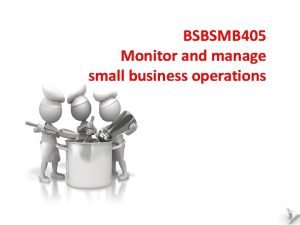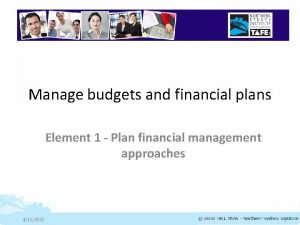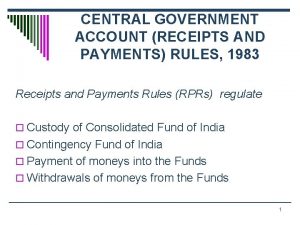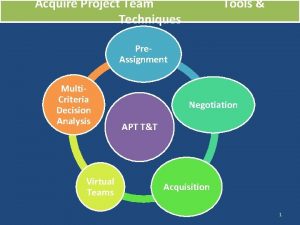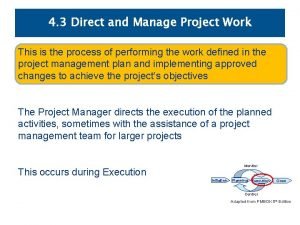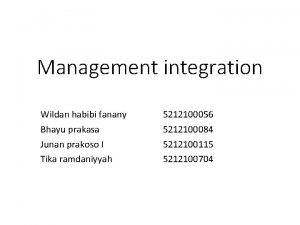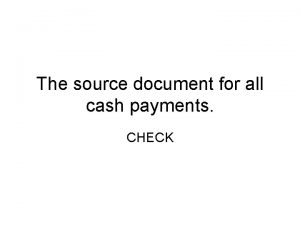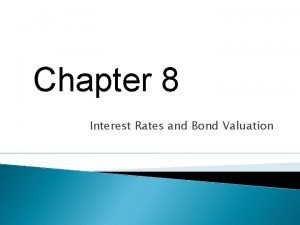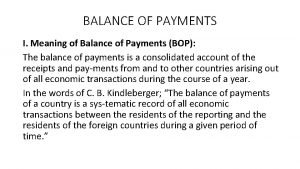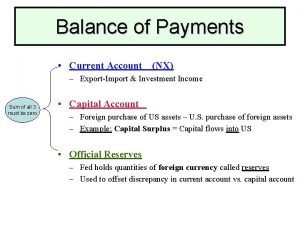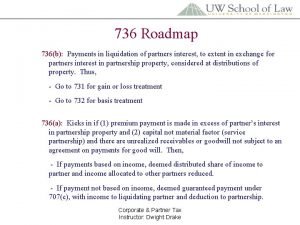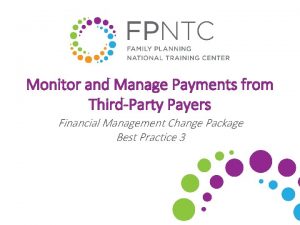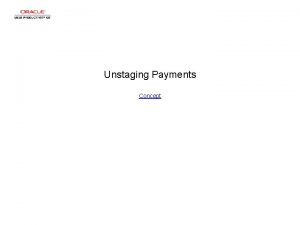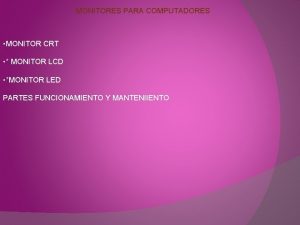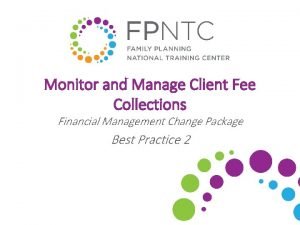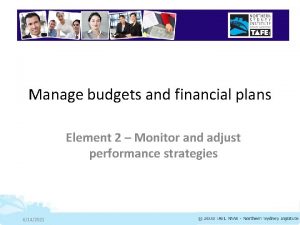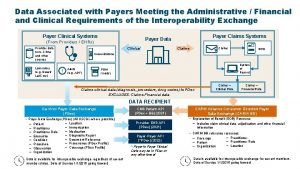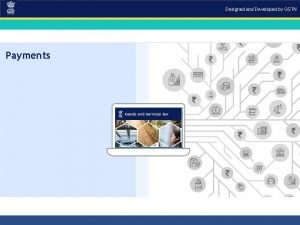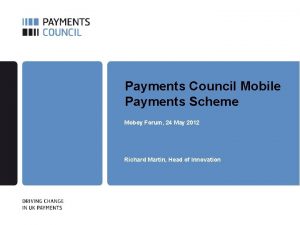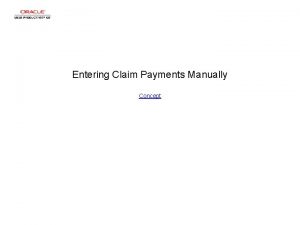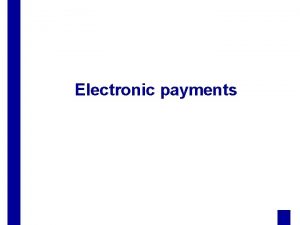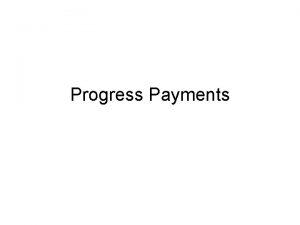Monitor and Manage Payments from ThirdParty Payers Financial































- Slides: 31

Monitor and Manage Payments from Third-Party Payers

Financial Management Best Practices 1. Bill the correct payer and optimal amount 2. Monitor and manage client fee collections 3. Monitor and manage payments from third-party payers Link: https: //www. fpntc. org/resources/financial-management-change-package 2

Financial Management Best Practice 3 Monitor and manage payments from third-party payers 3

Learning Objectives By the end of the presentation, you should be able to: • Describe the importance of monitoring and managing payments from third-party payers • Identify at least one denial type that can be avoided by improving processes before filing a claim • Identify one performance indicator sites can utilize to measure performance • Describe one tool available to monitor denial rates 4

Rationale for Monitoring and Managing Payments from TPPs An important component of managing financial health • To ensure you are receiving expected payments in a timely fashion • To identify/resolve issues and trends that are slowing down the reimbursement process 5

Suggested Performance Indicators Net Collection Rate • Can be broken out by: • Individual TPPs • Industry benchmark is 95% • Can be calculated by: Denial Rate • Each payer • Denial reason categories • Industry benchmark is 5% Link: https: //www. fpntc. org/resources/financial-management-performance-reportand-improvement-plan Link: https: //www. fpntc. org/resources/financial-dashboard 6

Suggested Performance Indicators • Can by measured /sorted by: A/R Aging • Site • TPP • Clinician Link: https: // www. fpntc. org/resources/financial-management-performance-reportand-improvement-plan Link: https: //www. fpntc. org/resources/financial-dashboard 7

Example of Impact Example 1 Reimbursement Example 2 Reimbursement Monthly TPP charges TPP contractual allowance (expected revenue) % $ $5, 000 $4, 000 95% $3, 800 50% $2, 500 A difference of $1, 300 per month, and $15, 600 per year 8

Setting Performance Indicator Goals Approaches: • Use industry benchmark ‒ For example: 5% is an industry benchmark for claims denial rate • Look at best practice among your clinics • Review historical experience, state information, or peer data/experiences • Reset or adjust as improvements are made Link: https: //www. fpntc. org/resources/financial-dashboard 9

Overview of Strategies for Best Practice 3 • • Develop/implement detailed written policies Analyze accounts receivable (A/R) on a monthly basis Analyze denial rates and trends on a monthly basis Implement strategies to manage TPP contract terms and relationships Link: https: //www. fpntc. org/resources/financial-management-change-package 10

Develop Policies and Procedures • Think about frequency or approach to reviewing and/or developing polices and procedures • Items to address in agency’s policies and procedures: ‒ Scheduling process/front-end procedures • Gathering TPP insurance information • Prior authorization process • Insurance verification process ‒ Client communications ‒ Billing/collecting for TPP client fees ‒ Claim submission process and time frame 11

Develop Policies and Procedures (cont. ) • More items to address: ‒ Follow-up processes for pending claims, denials, and partial payments ‒ Payment posting ‒ Adjustment/write-off policies ‒ Client acknowledgment of financial policies and procedures • Training and observing team 12

Manage A/R Accounts receivable (A/R) is the amount of money that is owed to your agency for services provided and for which you billed • A/R management involves running a variety of reports, analyzing data, and resolving A/R issues • Review A/R monthly • Identify information to compile manually, in the event of system or data extraction challenges 13

Utilize an A/R Aging Report • An A/R aging report distributes what is due by how old the money owed is • Allows high-level view/problem identification • Measure expected (contract allowed amount) revenue vs. charges 14

Utilize an A/R Aging Report (cont. ) • Accessing detailed information that comprises “bucket” totals • Data elements typically include: • • • Site Encounter-level data Procedure/service codes Date of service Dollars billed • • Dollars expected TPP Clinician Client ID information (patient number, birth date) • Sorting data elements allows you to identify issues or trends 15

Manage TPP Contract Relationships Why? • Renegotiate rates; add new services • Denials and/or coding issue resolution Approaches to maintaining TPP relationships: • Build data warehouse and reports • Share HEDIS/other measures • Partner with TPPs to improve their outcomes • Share client survey results • Promptly answer their information requests 16

Monitor TPP Contract Terms • Develop monitoring processes for contract terms to allow for prompt identification and resolution Remember: contract terms do not always translate to effective execution • Be familiar with contract terms and changes, and educate team 17

Focus On: Analyze Denial Rates on a Monthly Basis 18

Discussion of Challenges What challenges do you or your staff experience related to front-end practices? 19

Denial Management Denial is a refusal by a TPP to pay as a result of a clinician not adhering to the insurance’s policies/procedures or pending receipt of additional information • • Analyze denial rates on a monthly basis Avoid denials Utilize reports to analyze denials Resolve unpaid or denied claims 20

Denial Types to Avoid Before Filing a Claim • Registration denials ‒ Examples: not eligible on date of service, insurance verification, incorrect payer, cannot identify client, DOB ‒ Strategy: implement insurance verification processes • Credentialing denials ‒ Example: clinician not credentialed ‒ Strategy: maintain credentials • Timely filing denials ‒ Example: untimely filing, unresolved registration issues ‒ Strategy: bill weekly; monitor reports 21

Denial Types to Avoid Before Filing a Claim (cont. ) • Prior authorization denials ‒ Examples: missing referrals, prior authorization ‒ Strategy: identify services requiring prior authorization • Medical necessity/charge entry denials ‒ Examples: diagnosis coding error, invalid procedure ‒ Strategy: chart audits, scrubbing software • Bundled/non-covered denials ‒ Example: missing modifiers ‒ Strategy: manage contract terms, scrubbing software 22

Analyze Denial Rates on Monthly Basis • Can help identify issues/processes that are affecting revenue and cash flow When denials occur, analyze rates and trends by: • Denied dollars by payer • Number of claims by payer • Denial reason category – For example: registration, charge entry, credentialing, preauthorization 23

Utilize Reports to Analyze Denials Sample reports: • Denied claims ‒ Look for similar issues and resolve multiple claim issues simultaneously • Client charge/activity file ‒ Look at claim/client-specific details and note denial reason • Electronic remittance advice ‒ Look at explanations for claims payments 24

Resolve Unpaid or Denied Claims • Call claims representative, ask specific questions Foster a good relationship with insurer contact • Document findings to minimize future denials of the type investigated Provide feedback regarding errors and corrections • Claims may have more than one denial reason and may require multiple corrections to be paid 25

Data Driven Improvement Example Denial Rate–by reason category (identified “prior authorization required” as an issue) Front desk and contract management processes • Observe/retrain staff on prior authorization processes • Identify TPPs and services that contractually require prior authorization and add to contractual obligations tracking sheet. Review with team – Measure this denial type by TPP 26

Data Driven Improvement Example A/R Aging– measured by site (Identified percentage in 120+ age bucket as an issue) Payment processes • Review denials to assess if this is causing an A/R aging issue; observe/retrain staff on claim submission and A/R follow- up policies; review policies and procedures – Further sort/analyze A/R by site, by TPP, by clinician, or by code to further identify and/or follow up on issues – Denials rates 27

QI Example Link: https: //www. fpntc. org/resources/financial-management-performance-report-and -improvement-plan 28

Resources • Financial Management Change Package • Financial Management Performance Report and Improvement Plan • A/R Management Tool • Financial Dashboard • Contractual Obligations Tracking Sheet 29

Do you have any questions ? 30

Thank you! Contact: fpntc@jsi. com 31
 Progress vs performance based payments
Progress vs performance based payments Bsbsmb405
Bsbsmb405 Keep satisfied manage closely monitor keep informed
Keep satisfied manage closely monitor keep informed Stakeholder matrix
Stakeholder matrix Cash budget benefits
Cash budget benefits Dell financial payment
Dell financial payment Non financial methods
Non financial methods Special amount column definition
Special amount column definition Receipts and payments rules 1983
Receipts and payments rules 1983 Purchase and payment cycle
Purchase and payment cycle Audit of capital acquisition and repayment cycle pdf
Audit of capital acquisition and repayment cycle pdf Negotiate with williams and fudge
Negotiate with williams and fudge Accounting for purchases and cash payments
Accounting for purchases and cash payments 111 project
111 project Professional development trends and their validity
Professional development trends and their validity Acquire project team
Acquire project team Manage personal and professional development
Manage personal and professional development Direct and manage project work
Direct and manage project work Direct and manage project work
Direct and manage project work A business form ordering a bank to pay cash
A business form ordering a bank to pay cash J curve economics
J curve economics Government transfer payments examples
Government transfer payments examples Sage mobile payments app
Sage mobile payments app Ap automation 101
Ap automation 101 Pure discount bond
Pure discount bond Balance of payments equilibrium
Balance of payments equilibrium Balance of payments equilibrium
Balance of payments equilibrium Current account deficit vs surplus
Current account deficit vs surplus Iam764
Iam764 Capital lease 4 criteria
Capital lease 4 criteria A form showing proof of a petty cash payment.
A form showing proof of a petty cash payment. 736(b) payments
736(b) payments

